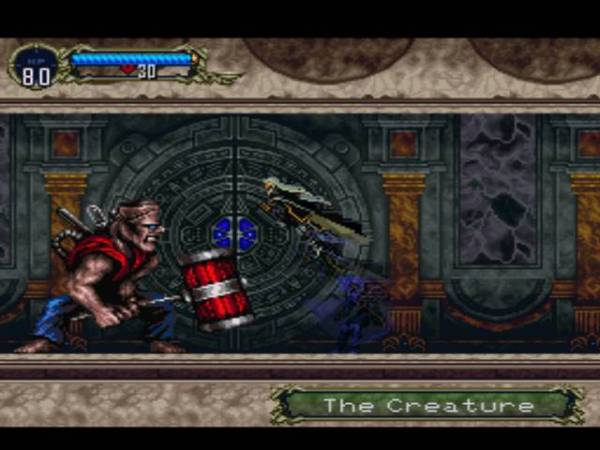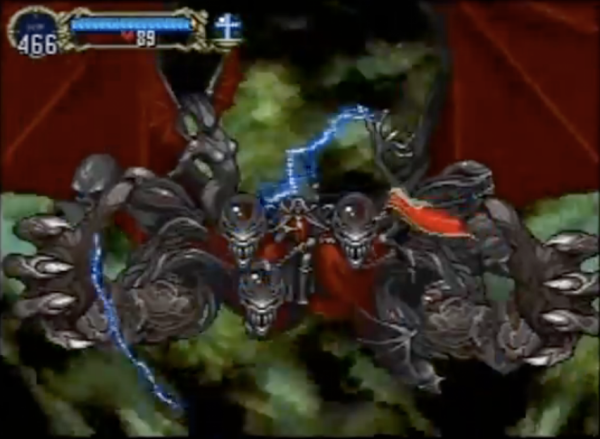The last thing you want to do over the summer is catchup on things you’ve put off but sometimes, you need a couple of extra hours. So this summer, we’re debuting a new feature “Summer Classes,” where I explore my massive pop culture blind spots and write about my trip experiencing them. Here, we finish playing “Castlevania: Symphony of the Night.”
I’ve only killed Dracula two times. Over the course of one summer, I ruthlessly played through the first “Castlevania,” defeating Death, getting through the infamous Medusa/Knight hallway and firebombing the shit out of the king of all vampires. My freshman year of college, I played through “Castlevania IV,” constantly reentering passcodes to start at the last level, relentlessly trying to get to Dracula and finish the job.
“Symphony of the Night” has players fight Dracula not once, but twice and both times are disappointments. The first match is little more than a gimmick to set up the backstory and the second battle is a joke. For a game designed to challenge players every step of the way, “Symphony of the Night” begins and ends on a whimper and it ultimately ended up poisoning one of the best games I’ve played in a long time.
Initially, I was really pleased with the way the Inverted Castle managed to balance the increased difficulty with slightly changed dungeon layouts that refreshed the game. However, it ended up being entirely too easy. By that time in the game, I had so many ways to overcome and avoid challenge that there wasn’t any reason to put myself in danger. The only time I died was when I put myself in no win situations. I could easily avoid every difficult fight or turn to mist as I approached the next save point. That’s not fun or challenging. It just sort of feels like cheating.
Even the bosses at this point weren’t hard based solely on how many options were available to me as a player at any given moment. I had a bevy of weapons that could deal differing damages as needed. I had armor that could stop petrification, prevent poisoning, heal me when I was struck by lightning or increase my speed. If I was stumped, I was one clothing choice away from being able to best my opponents. I didn’t feel powerful as a player or avatar, I felt as if I was cheating the game.
That’s not always a bad thing. In one of my favorite RPGs of this generation, “Deus Ex: Human Revolution,” the thrill of the experience is using your bionic abilities to work around the challenges that the game presents you with. You’re never punished for your decisions and always given a route to success based on what you choose. On my first playthrough, my invisible sniper would creep through cities and offices, using his tranquilizer rifle, his bare hands and his ability to slip out of site to destroy his enemies silently. My second trip through the game featured a hacking expert who was more likely to turn the enemy’s robotics against them rather than get his hands dirty. Both times, I felt like I was a badass and as if the game wanted me to succeed, even when I broke the rules the game already had set up.
I never had that same sense playing through the final half of “Symphony of The Night.” The abilities that I had didn’t make the rest of the game more challenging or interesting. If the Inverted Castle would have featured boss fights, encounters or platforming sections that kept in mind the fact that I was capable of nearly any action at any time. Other games have managed to keep these different factors in mind. The Elder Scrolls games have allowed players to overcome the obstacles they face, regardless of individual points placed in certain skills. Likewise, Fallout has managed to balance the player’s character choices in the quest progression. If you don’t have experience in lockpicking, you can hack a computer or maybe search the area for a password. The game balances the choices you have with the increased power your character gains as you play the game.
“Symphony of the Night” just throws more and more monsters at you, hoping that you’re challenged more and more. It doesn’t take into consideration the fact that you can fly and be invincible, shoot fireballs and use spells to heal yourself at will. That isn’t a scaling difficulty. Its just lazy, thoughtless design.
That’s the true failing of “Symphony of the Night.” It never considers the way that the game develops after the well designed first half and never really challenges you after that. Sure, enemies are stronger, bosses are bigger and items are still hidden but little consideration is given to the way in which the player’s avatar strength has been raised and how that meshes with the design choices.
I finished “Castlevania: Symphony of the Night” with the good ending, killing Shaft and the final form of Dracula. Despite the 12 hours I spent with it, I didn’t have a sense of accomplishment like I had when I finished the first game or “Castlevania IV.” I felt relief and when you’re watching the castle crumble after banishing evil, that’s never the right emotion to have.
Next class: The J-horror genre made a big splash in America with “The Grudge” and “The Ring” but one entry never made it to our shores. Next time, we check out the quintessential film of the form, “Pulse.”



